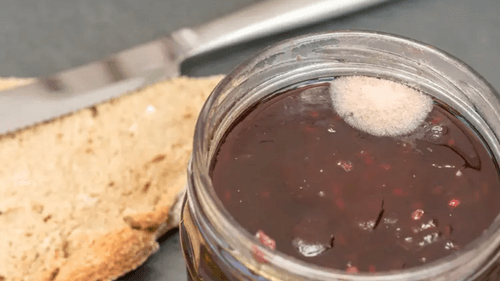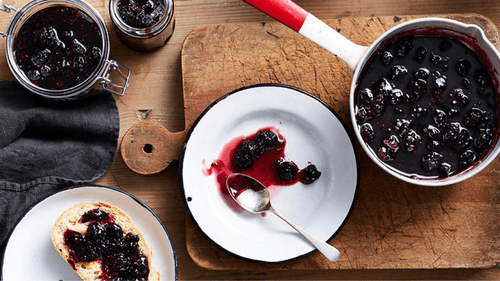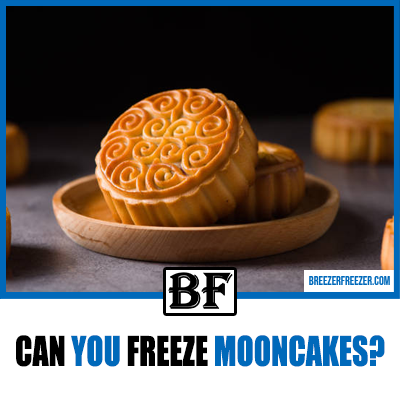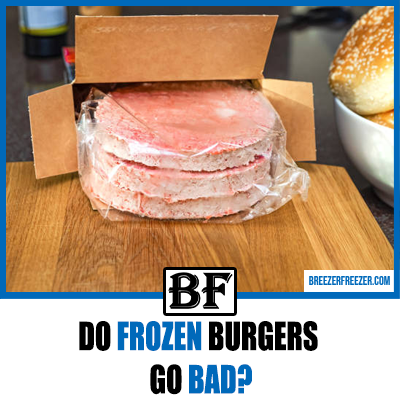Opened Preserves: How Long do Jams and Jellies Last?
Jams, jellies, and preserves have graced the breakfast table worldwide for centuries. You can take any delicious fruit and make preserves, Jam, or jelly easily by mixing it with sugar and pectin. Eaten on toast, this spreadable sweet food is delightful. Of course, many of you adore peanut and jelly sandwiches for a good reason, and the contrasting flavors are a triumphant flavor duo.

Did you know that America’s favorite jam is strawberry and financial growth predictions estimate the jams and preserves market to be worth almost 10 billion USD by 2027? That’s a lot of sweet news.
This article will look at jam, preserves, and jellies while answering many frequently asked questions regarding the lifespan of these sweet condiments that we love so much.
Let’s jump in.
How long are jarred preserves good for?
It is always best to start from a place of authority to gain confidence in the information you read.
The USDA has clear guidelines for the life of jam and jellies that we should adhere to. The good news is the products have a reasonably long shelf life.
The USDA says that unopened jams and jellies have a shelf life of up to a year if stored in a cool pantry. But it gets better for cooks who love making jams and jellies.
Homemade preserves canned in a boiling water bath can be stored for an additional year in the same storage space meaning homemade jams and jellies have an unopened shelf life of two years.
Once you crack the life, the clock is ticking, and your jam should be stored in the fridge for a maximum of 3 months and jelly for six months.
Why do jams and jellies not spoil?
It may seem like a mystery, but there is a simple explanation for why jams, jellies, and preserves all share product longevity.
It is the sugar content. Sugar prevents microorganisms from settling on the sweet delicious breakfast condiment.
Sugar is a basic food for life; if possible, molds like to eat as much as we do, but it’s rare to find mold in a jar of jam or a preserve. This is due to the sugar content and the acids made in the process.
However, at some time in your life, you will open a jam or jelly and be confronted by mold. Its been successful in establishing itself from cross-contamination. A spoon, a knife going from jam to bread and bread to jam, and even being licked clean can add bacteria to an otherwise pristine product creating flourishing mold growth.
If you have mold in your jam or preserve, consider it spoiled and not be tempted to remove it and carry on as if it’s a minor issue.
Molds are somewhat like icebergs. What you see on the surface is only the smallest part of the problem, and much more is happening underneath the surface.
Can sealed jars of jam or jelly grow mold?

It is improbable if it is a new jar of jam or jelly. Something happened during the manufacturing process that allowed bacteria to enter the jar. It would be like being struck by lightning in New York City on Christmas day for this to happen frequently.
If you have been consuming the jam, replacing the lid correctly, and placing it in the fridge after use, it’s possible to get mold growth but still unlikely.
Of course, you need to use a modicum of food safety awareness, and using utensils dipping in a jam by more than one person can lead to contamination of the product. Spoons and knives can be left on the side, gathering bacteria while you tuck them into your sweet toast.
Ensure utensils are clean, and no double dipping and licking the spoon!
Why does jam go bad?
There are several reasons, including cross-contamination from eating utensils and poor storage. Store-bought jams, jelly, and preserves are consistent products, so it’s time for them to go bad.
Exposure to heat and direct sunlight causes preserves to perish faster than expected, and the heat will activate any bacteria in a jam and make it bad.
Heat and light can change the consistency of jams and jellies. They become watery and more susceptible to airborne bacteria.
For jam to last once the seal is broken, it must be placed in the fridge after each time it is consumed.
The same applies to homemade jams and jellies, although they have a longer shelf life due to the boiling temperature in a water pan.
Does humidity affect jam-making?
Making jam is an art and science with experience being gained through hands-on experience and research. Did you know that the diameter of the cooking pot can affect the consistency of the jam, and when you talk about humidity, that is another long story?
Finding the designated sweet spot is one of the most challenging aspects of producing jam. When anything is overcooked, you start to question the integrity of your silverware as you reach in for a mouthful.
When it’s time to eat, if you don’t allow the jam to cool enough on the burner, it will threaten to run off your bread in sticky streams. However, jam of this consistency is still fantastic on pancakes or in yogurt. Your friends will still be amazed whether you call it rustic syrup or old-fashioned preserves.
The atmospheric pressure of where you cook your jam will influence the outcome. If ever you look at a jam maker as someone who has nothing better to do, think again they are masters of a dying craft.
Why did my jam turn dark?

Having a dark jam does not mean it’s bad. It can be part of a process where the balance of heat, humidity, and other factors has started, where the jam starts to darken from the top down.
If you have ensured your jars are sealed correctly, you have nothing to be concerned about. The jam or jelly will not win any awards or look pretty, but it should taste fine and be enjoyed as usual.
What is the difference between jam and preserves?
Fruit is crushed to create a jam. Fruit in preserves is usually whole or in sizable chunks. There may not be much distinction between raspberry jam and raspberry preserves since some fruits, such as blackberries or raspberries, won’t stay whole after processing as they disintegrate during the cooking process.
What is bacon jam made of?
Bacon jam is one of those delicious oddities created to try and emulate the beautiful flavors of bacon.
As you would expect, it’s made by slow-cooking bacon and other ingredients like sugar, onions, vinegar, and syrup. When the bacon and ingredients are cooked down, they are blitzed in a food processor to create this gorgeous-tasting jam. That is possibly relishing more than a jam, but it is sweet, so it masquerades as a jam.
What happens if you freeze jam?
You can freeze jam, and it will extend its shelf life. However, soft fruits never do well in the freezer. Ice crystals form in the fruit and crush the delicate structure making it mushy and not so great to eat. It tastes fine, but the texture will be gone.
Jams may be frozen correctly and kept for up to a year. Even so, it is best to attempt to eat them within six months. You won’t have to sacrifice the flavor or consistency of your delectable delicacy in this method.
You’ll be better off if you don’t keep your jams frozen indefinitely. Preserves lose flavor and taste if they are kept in the freezer for an excessively long time. They could even start to degrade and become dangerous to eat.
How do you defrost jam?
The safest and most common method for defrosting jam is to take it out of the freezer and place it in the refrigerator for the night. Your frozen jam should be usable again by morning.
To get it to room temperature, you may also leave it outside overnight without fear of bacteria growing.
Speedy Defrosting. Perhaps you need some tasty jam and can’t let it out overnight. If so, you can choose a quick thawing method.
Put your jam in hot or warm water once you’ve taken it out of the freezer. Depending on how cold the water is and how frozen the jam is, it should thaw in between thirty and an hour.
Clearly, placing glass in hot water is a major no. The glass will crack with differing thermal expansion rates, known as thermal cracking.
The inside is freezing, and the outside is hot. It’s a no-brainer.
Final thoughts
Unopened jam straight from the grocery store is good for twelve months unopened. Once opened, it must be stored in the fridge and kept chilled. It will last for another three months in the fridge.
Homemade preserves, jam, jellies, and preserves have a longer shelf life in jars that have been boiled in a hot water bath. Homemade jams can last up to two years and then six months in the fridge when opened.
The jam goes bad over time, and mold growth can occur anytime if cross-contamination occurs.





